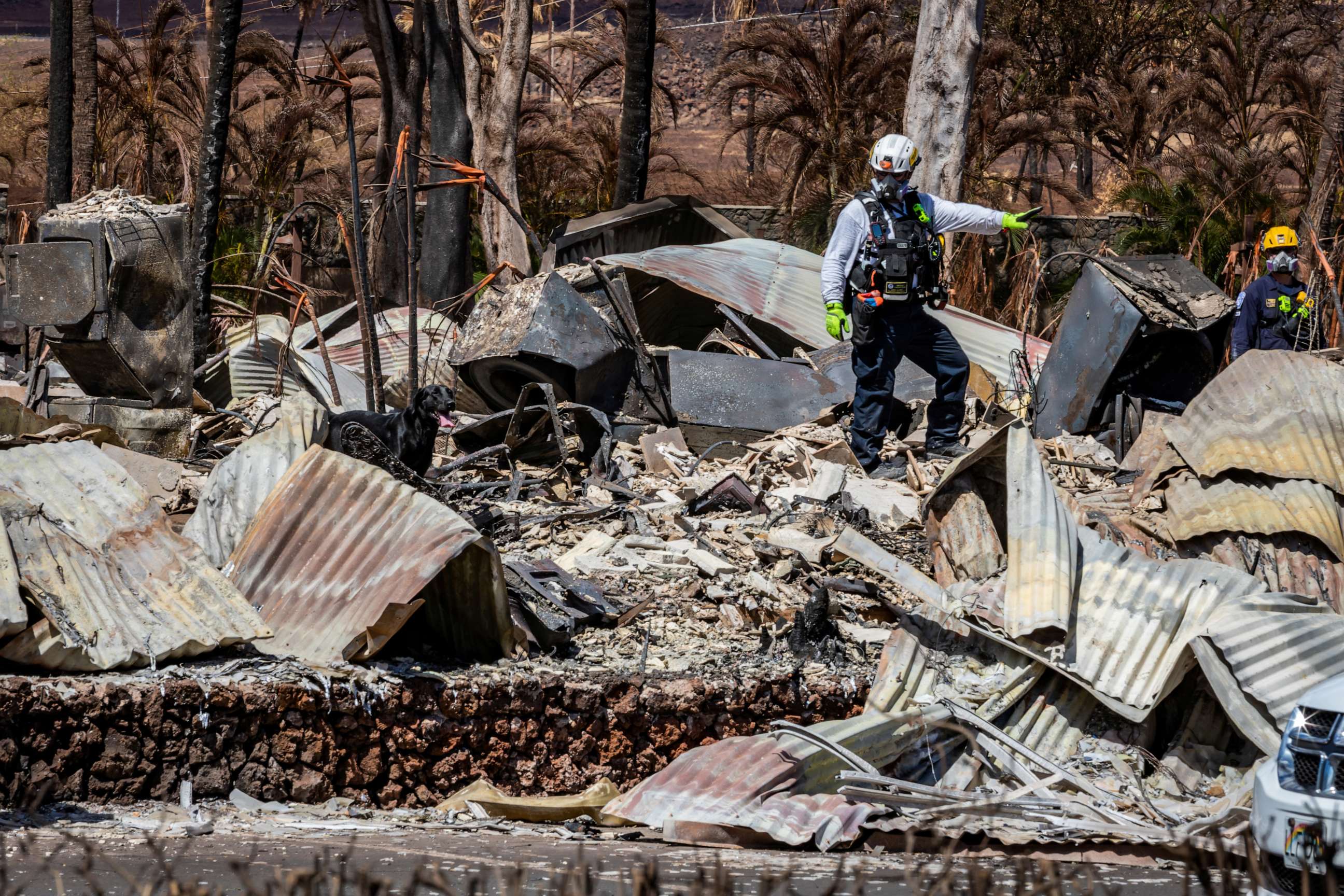Environmental impacts of Maui wildfires will last for years to come, experts say
The wildfires in Maui may finally be fully contained, but the environmental impact left in the wake of the the infernos will last for years to come, experts told ABC News.
As the Maui community begins to heal from the wildfires that killed more than 100 people and incinerated a large portion of the island, residents will now start to grapple with the painstaking cleanup and rebuilding phase, an emotional process that could also contain health risks, the experts said.

The cleanup process will need to be done "very carefully," due to the hazards, Kristina Dahl, senior climate scientist at the Union of Concerned Scientists, told ABC News.
"The health and safety impacts of the Maui fires go beyond the initial blaze due to the variety of air pollutants released," David Broday, professor of civil and environmental engineering at the Technion – Israel Institute of Technology, told ABC News.
The biggest issue will be to figure out how to handle all that waste, Aaron Poentis, a disaster restoration expert and regional account manager at First Onsite Property Restoration, a Honolulu-based building restoration service, told ABC News.
The burning of biomass releases soot and various gases, which alone can cause respiratory problems, Broday said.

Much of the debris will be toxic, due to combustion byproducts released amid the blaze, Poentis said, adding that the biggest concerns are asbestos and lead, based on the types of buildings that were lost.
Even byproducts from the burning of common household items, such as plastic and electronics, can be hazardous and carcinogenic, Poentis said. The burning of manmade products, like plastics, electronics, and vehicle batteries releases even more hazardous compounds into the air, which can potentially cause long-term health repercussions for recovery workers and residents, Broday said.
Due to Maui's mountainous landscape with higher-speed winds, air pollutants could have dispersed further and impact a greater area, Broday said.
"The level of environmental degradation that follows that type of fire is significant," Raya Salter, a member of the New York State Climate Action Council and former Hawaii state employee, told ABC News.

The logistics for the transportation of the debris and how long those toxins will persist in the environment, which is hard to estimate, Poentis added.
And the overarching issue amid the cleanup and rebuilding process is the fact that Maui is a remote island, which will make everything much more expensive, Salter said.
Materials like lumber will need to be shipped in from thousands of miles away, while the cost of removing the debris from the island and disposing of it safely will be considerable as well, Salter said.
"You're looking at a huge markup of cost," Salter said, estimating the increase to be about 30%.

There will need to a balance between respecting the wishes of residents who lost everything and their willingness to comb through the wreckage with the recognition that the material that is left is hazardous and needs to be managed appropriately and safely, Poentis said.
Masks and even hazmat suits will likely be a common sight once cleanup commences, Poentis said.
Dahl pointed to the aftermath of the Camp Fire, California's deadliest wildfire that decimated the town of Paradise in 2018 and killed more than 80 people, as a comparison to what the island of Maui may experience.
Five years later, the population of Paradise is about a third of what it was before the Camp Fire, and the debris removal was the largest the state of California had ever seen, Dahl said.
"The biggest takeaway, from what I have seen, is that recovery is very long, and it's hard," she said. "And that's a difficult thing to say when the grief that people are going through and the uncertainty they're going through is just so raw."

Another lesson from the destructive fires that have plagued California is the possibility that contaminated waste could seep into the soil and get into streams and shore waters, severely impacting those environments, Poentis said.
If not cleaned up in time, the groundwater resources could then be contaminated, Poentis said.
The historical and cultural significance of Lahaina, the original capital of the Hawaii kingdom that was constructed in the 1800s and destroyed in the fires, will likely further complicate restoration plans in order to establish property historical preservation, Poentis said.
"There's going to be probably some interest in rebuilding it in what it looked like prior to the destruction," he said.

The island is still very much in crisis mode, which includes ensuring temporary housing and food supply as well as the response to the utility system, Poentis said.
Once residents are allowed back to the burn area to survey their properties, another layer of mourning and healing will begin.




